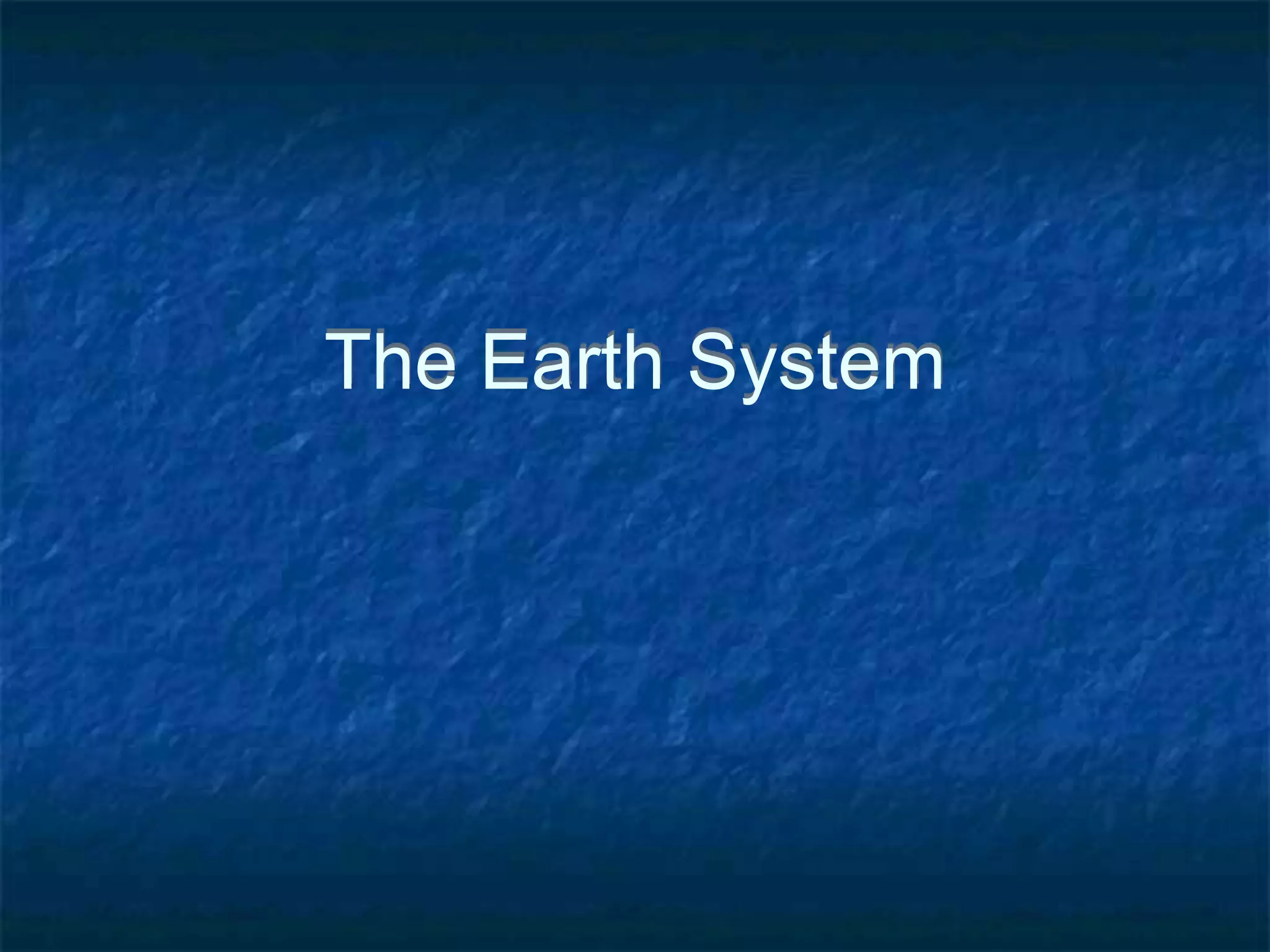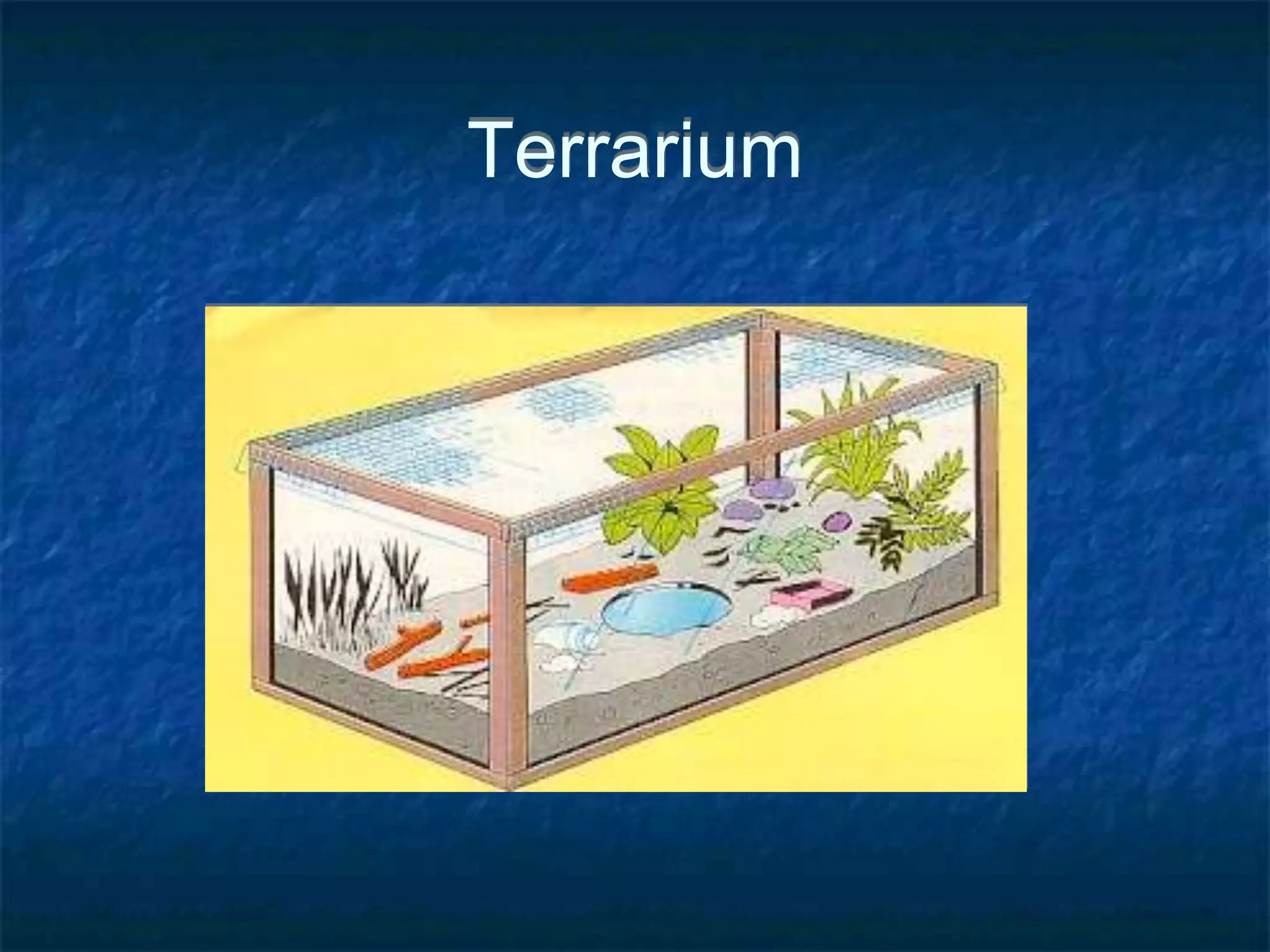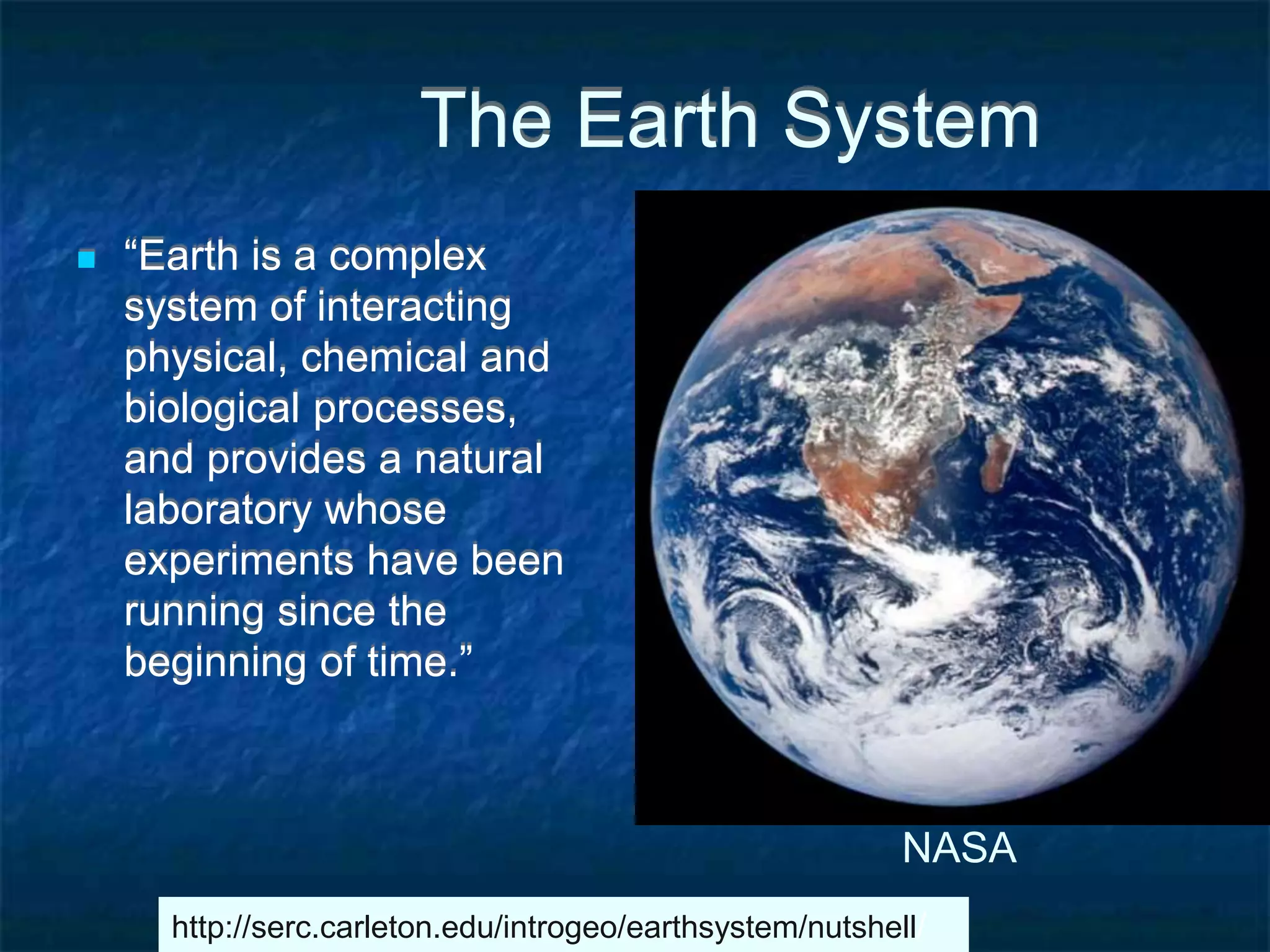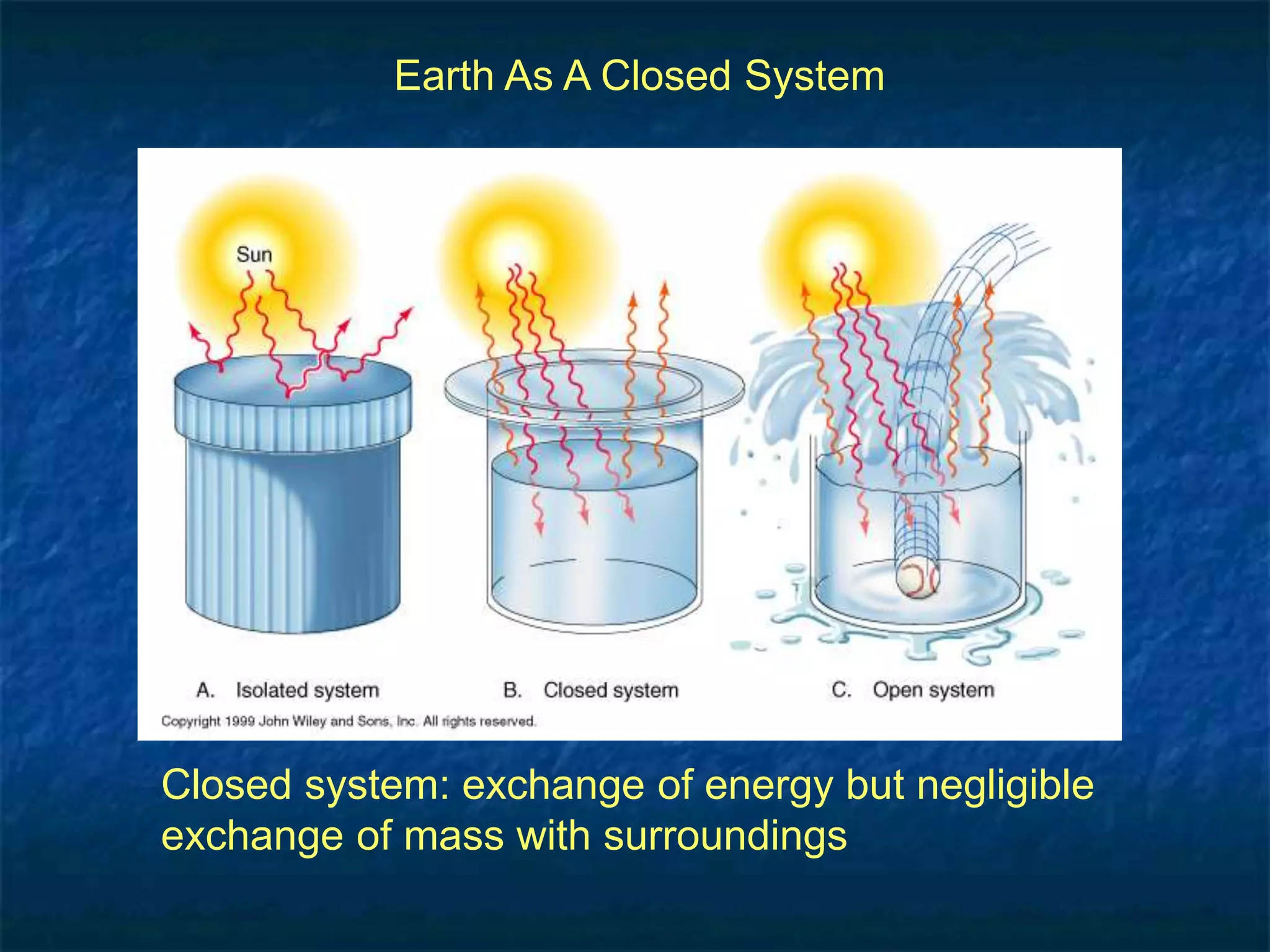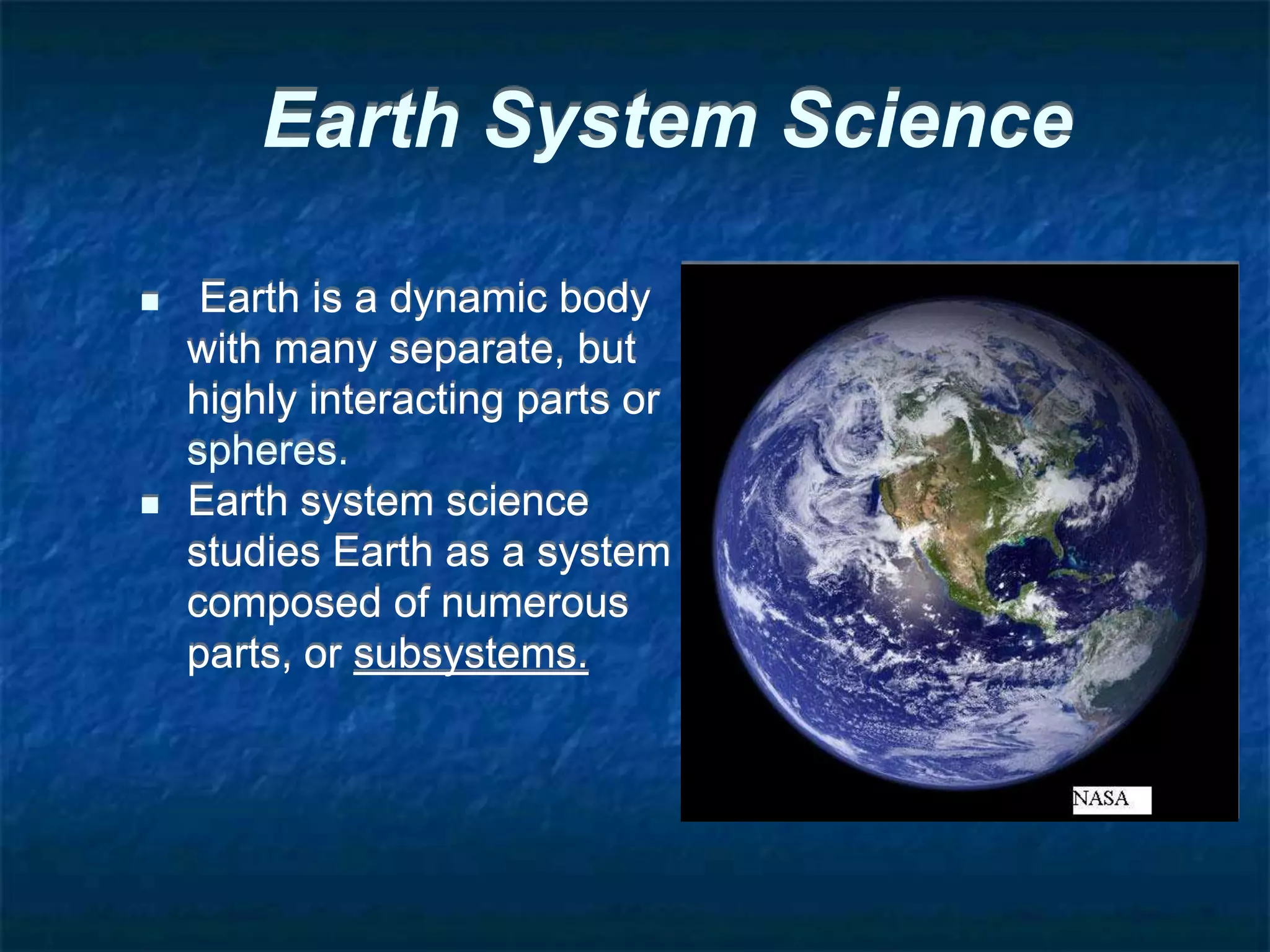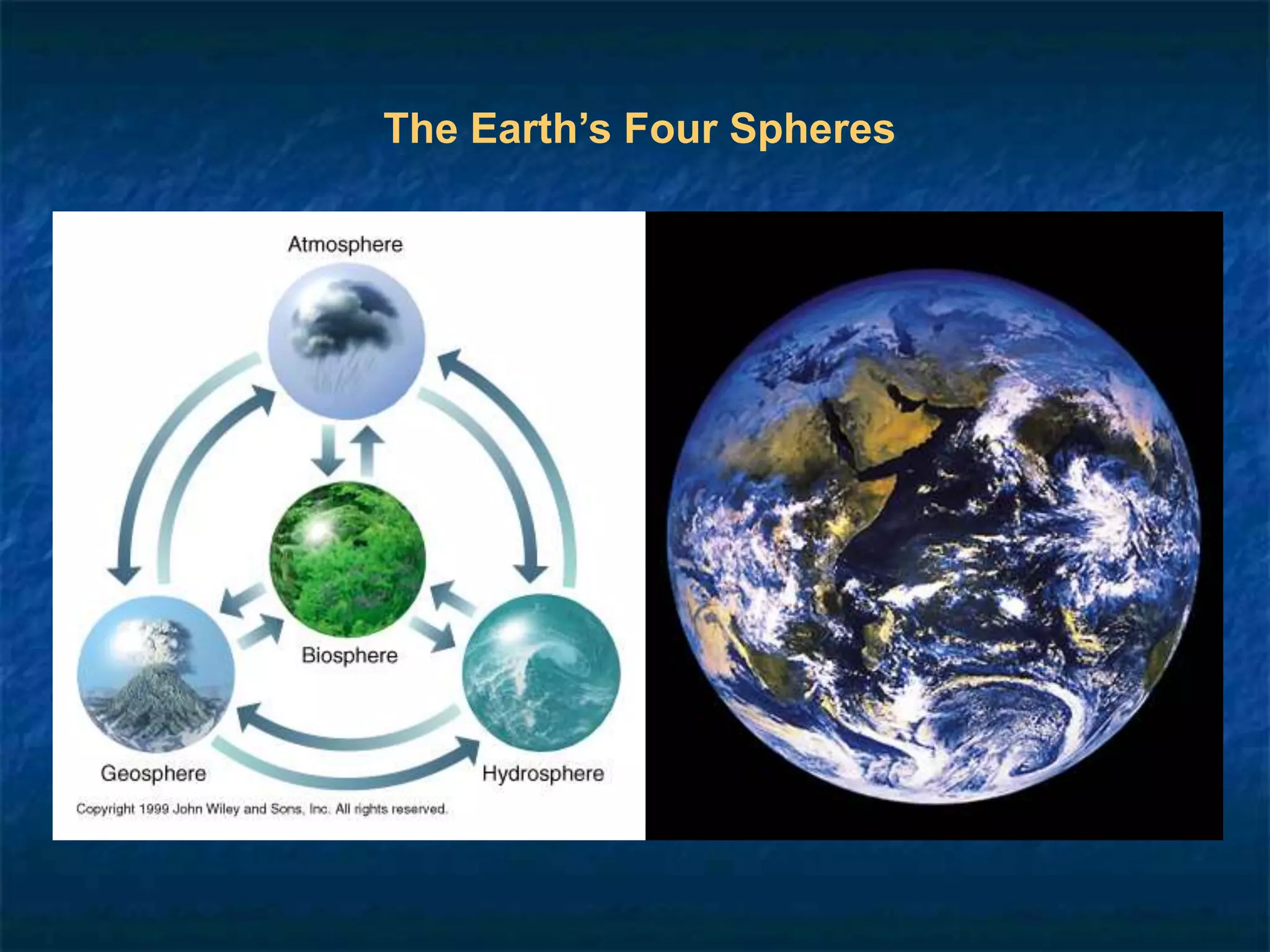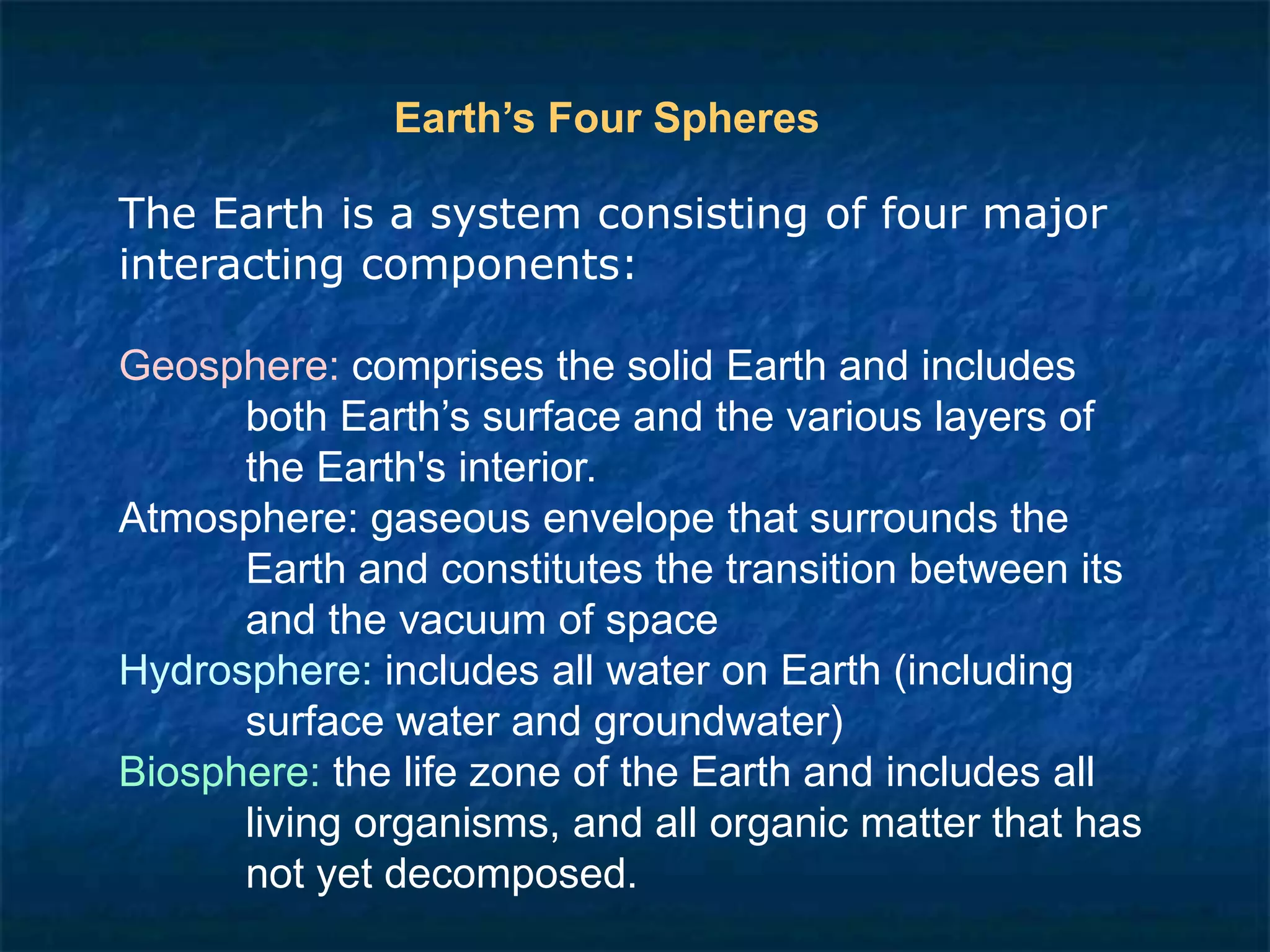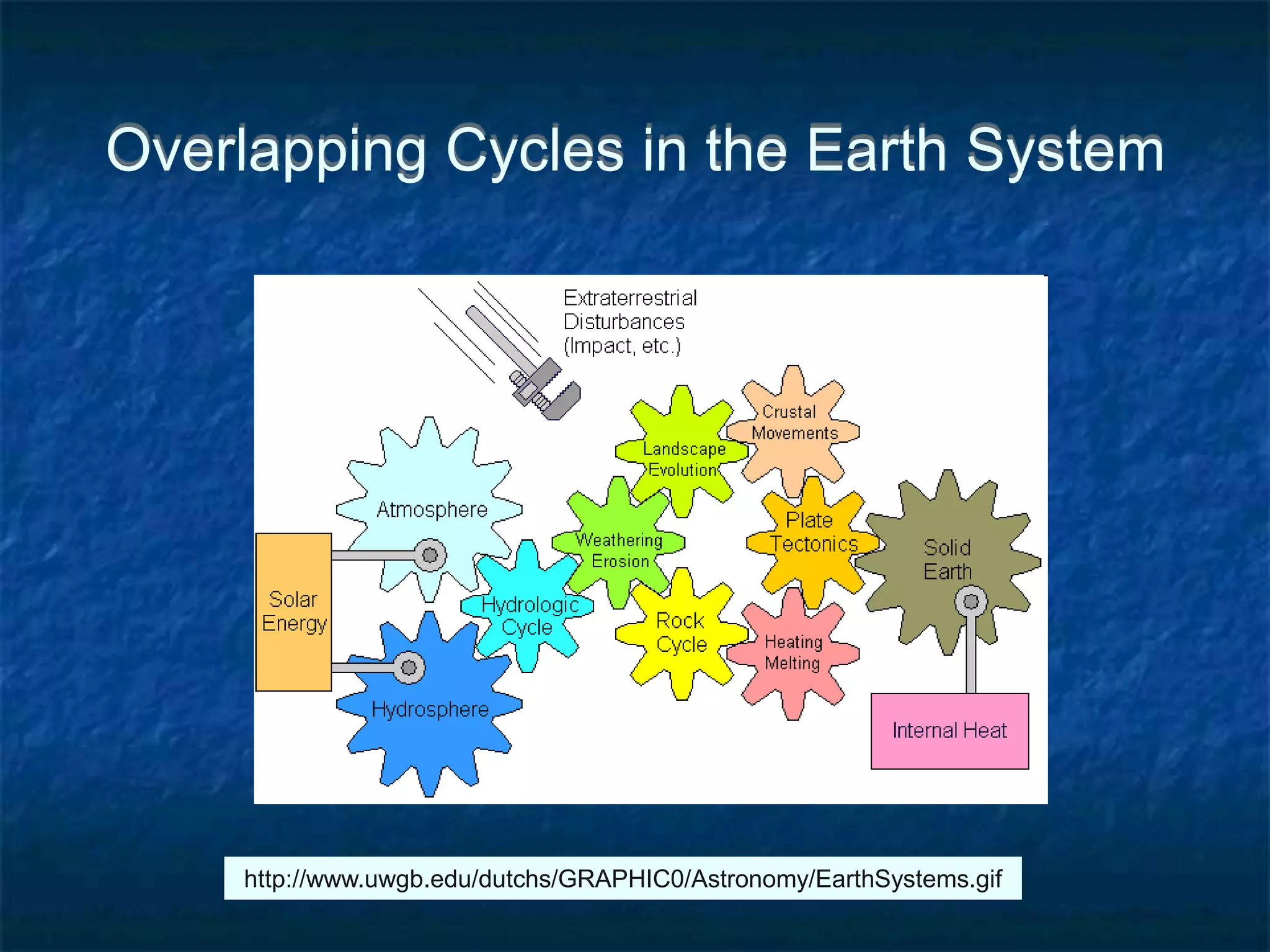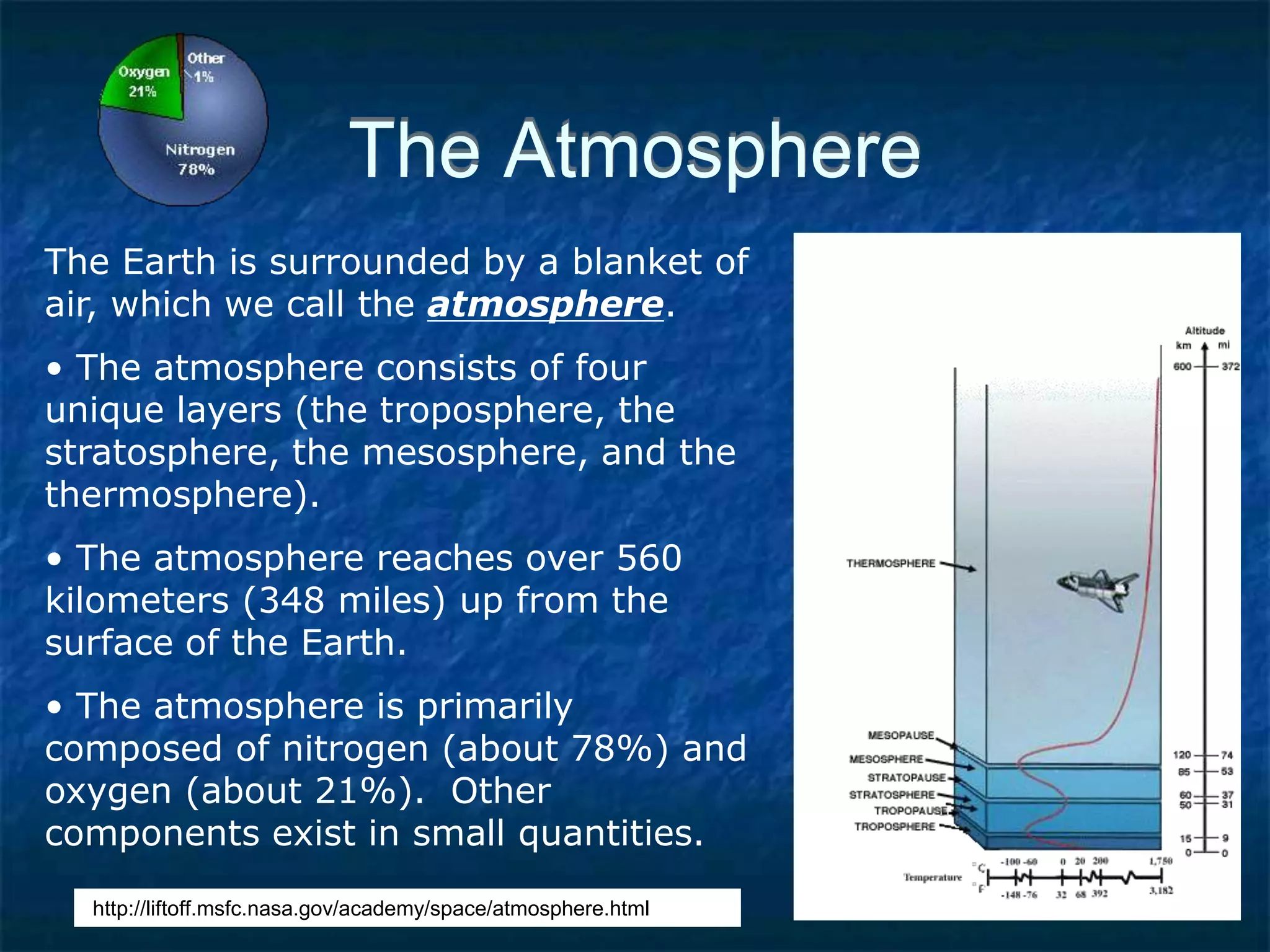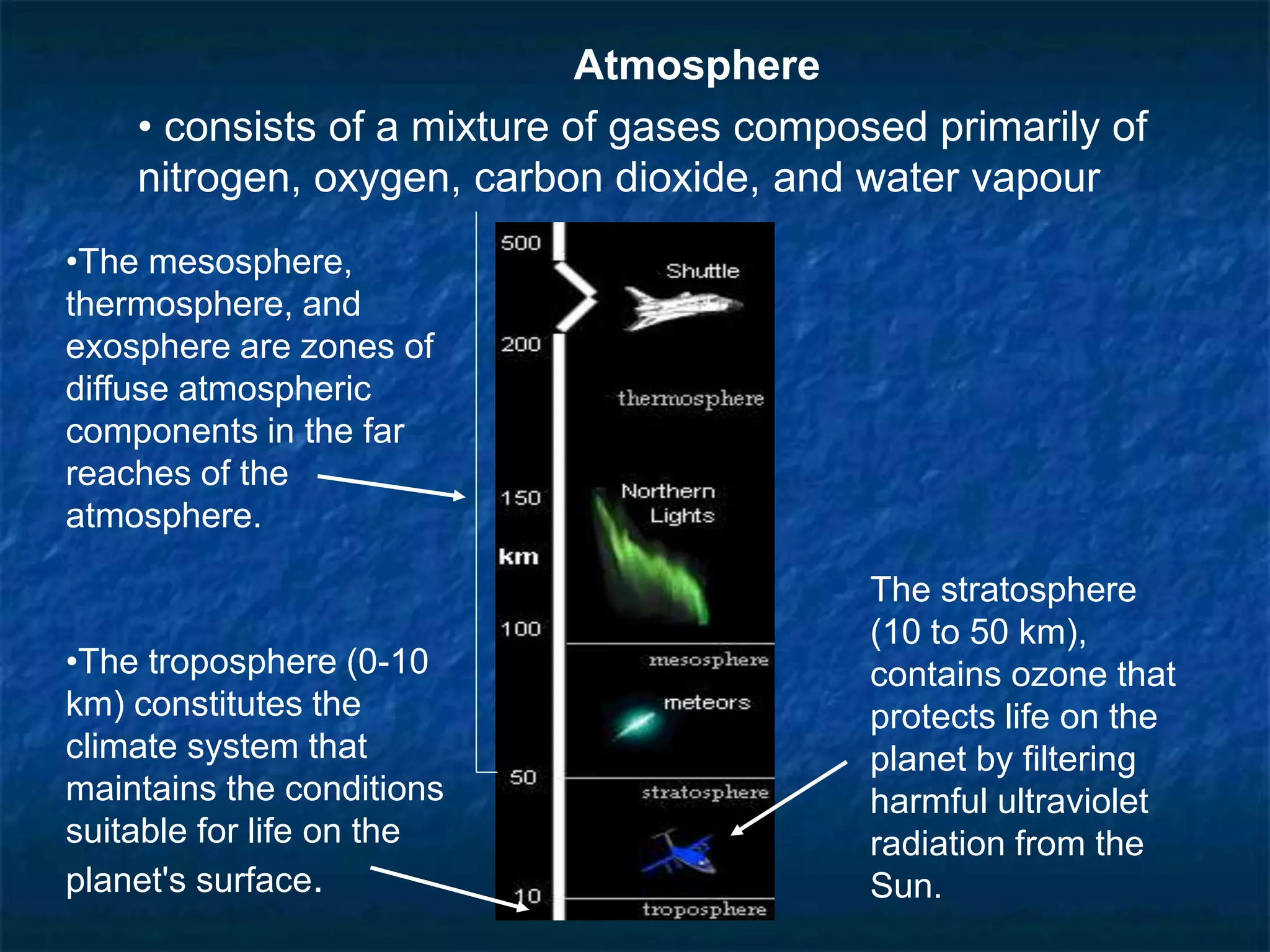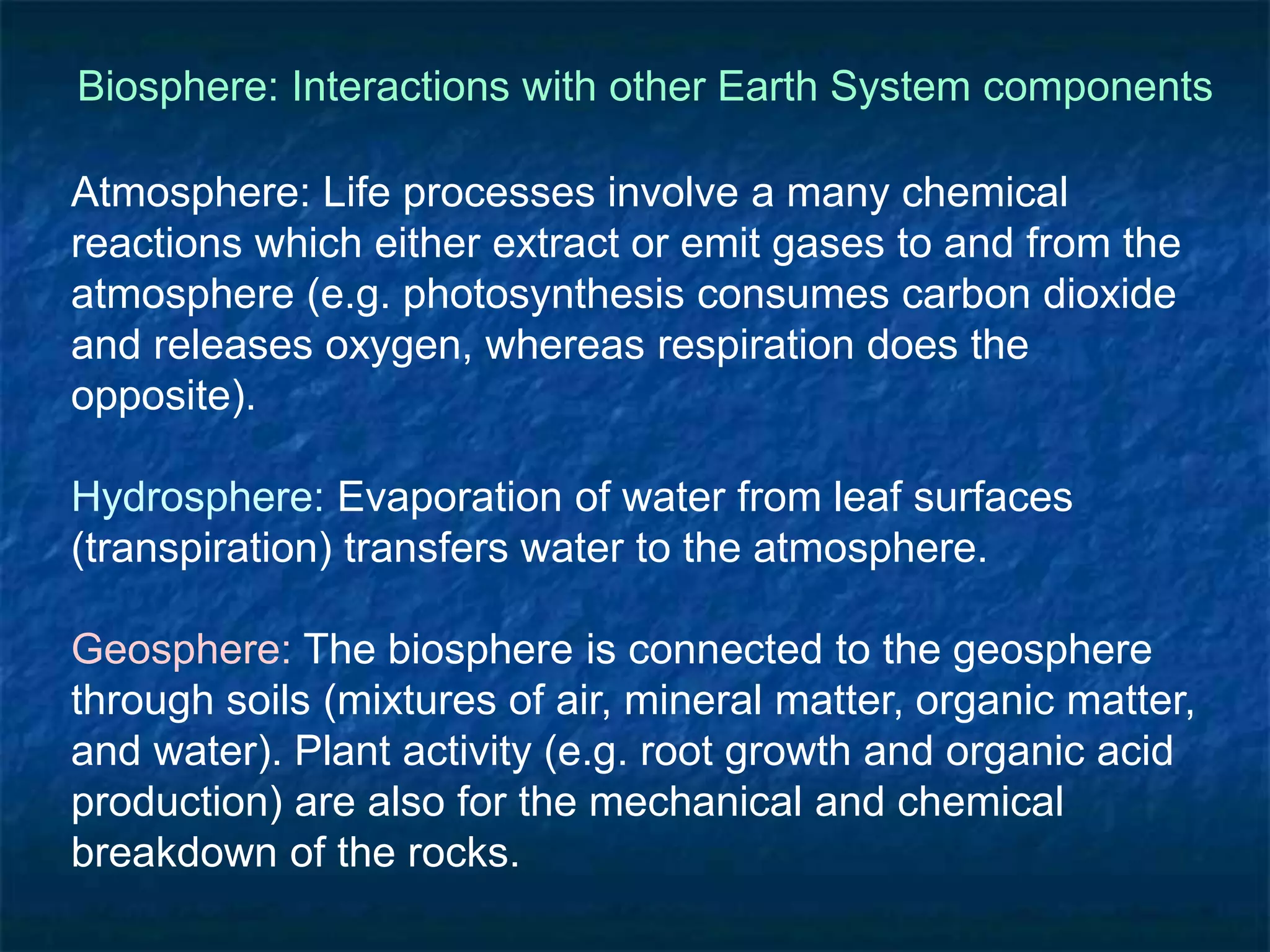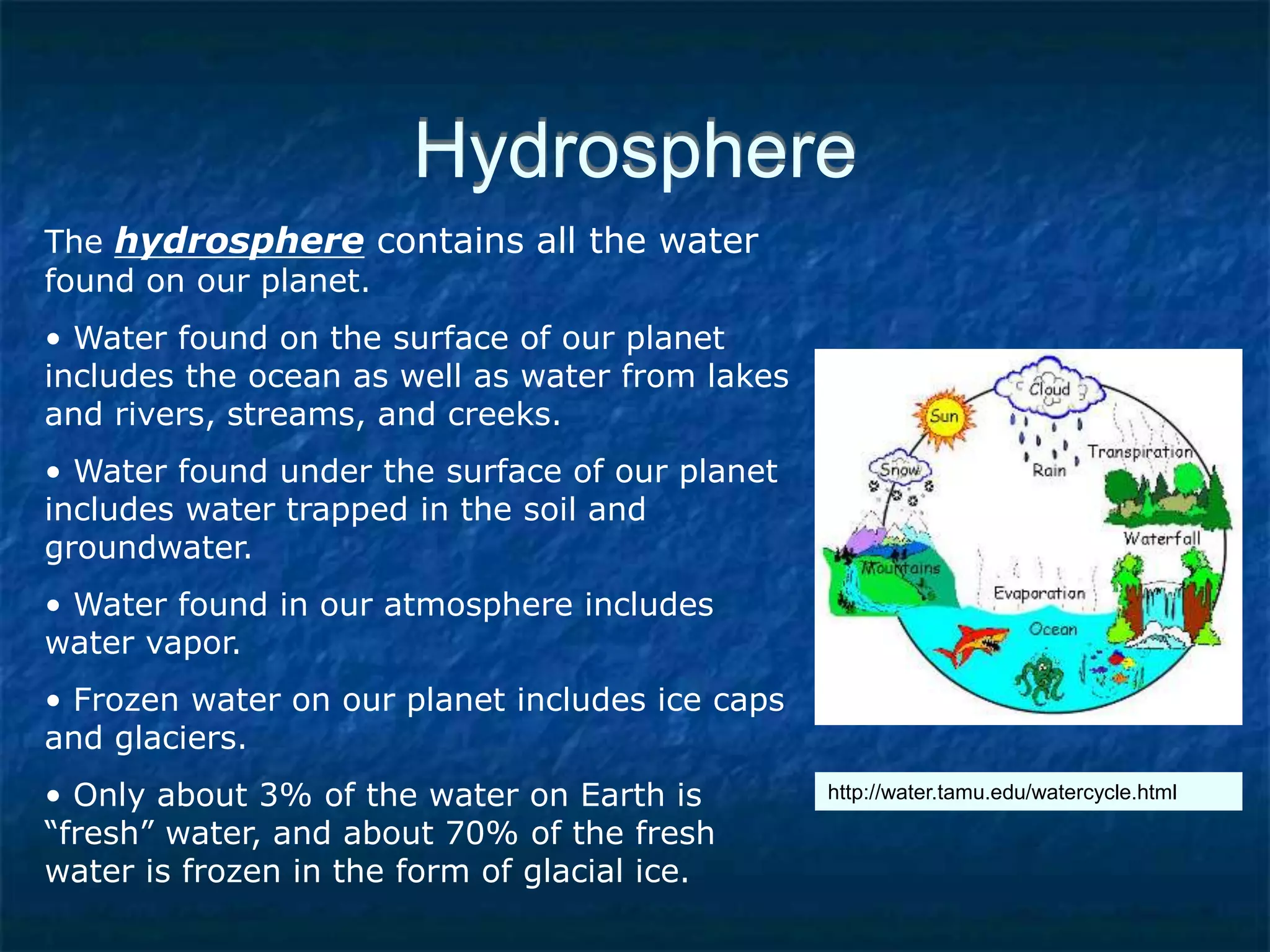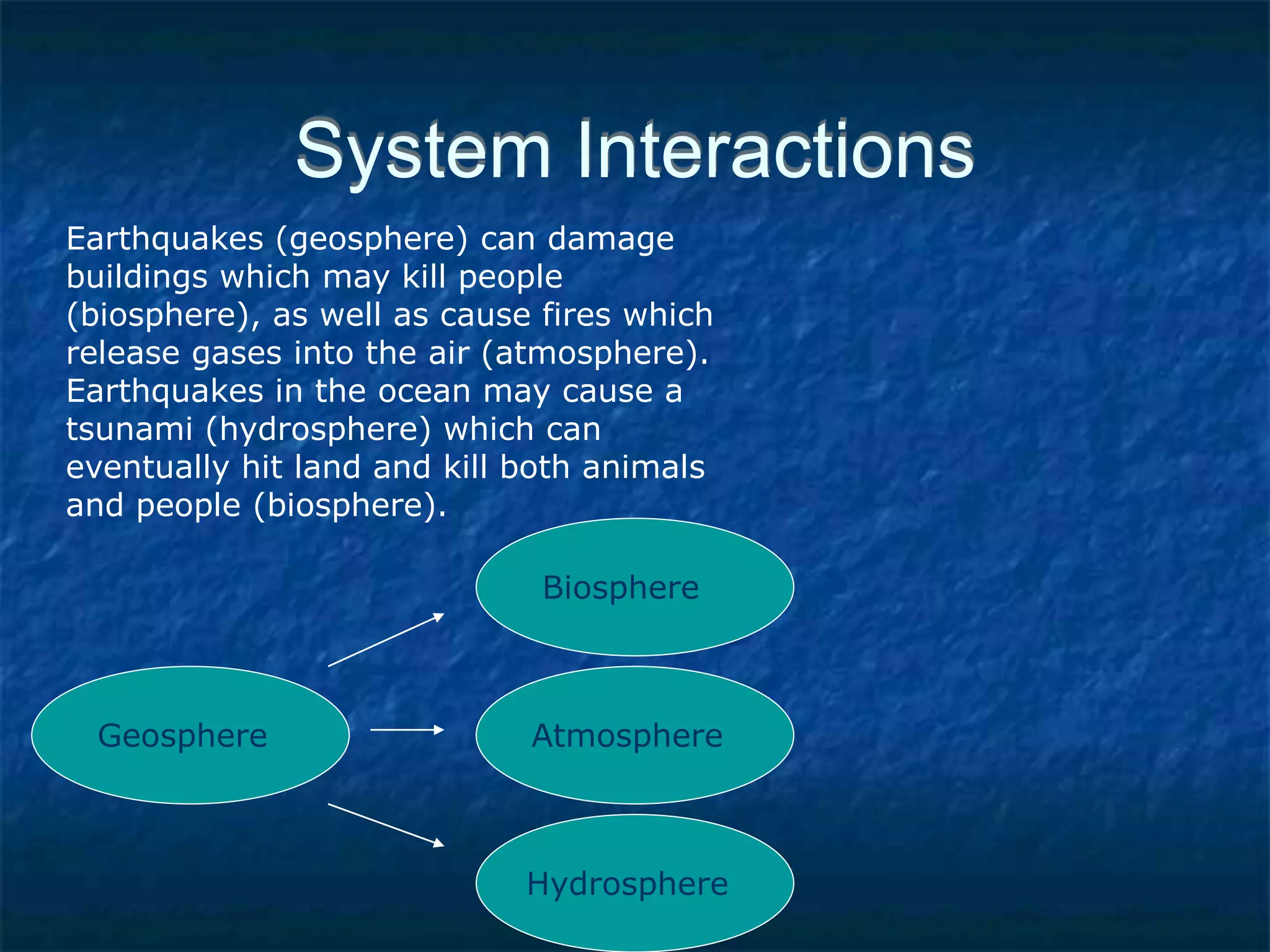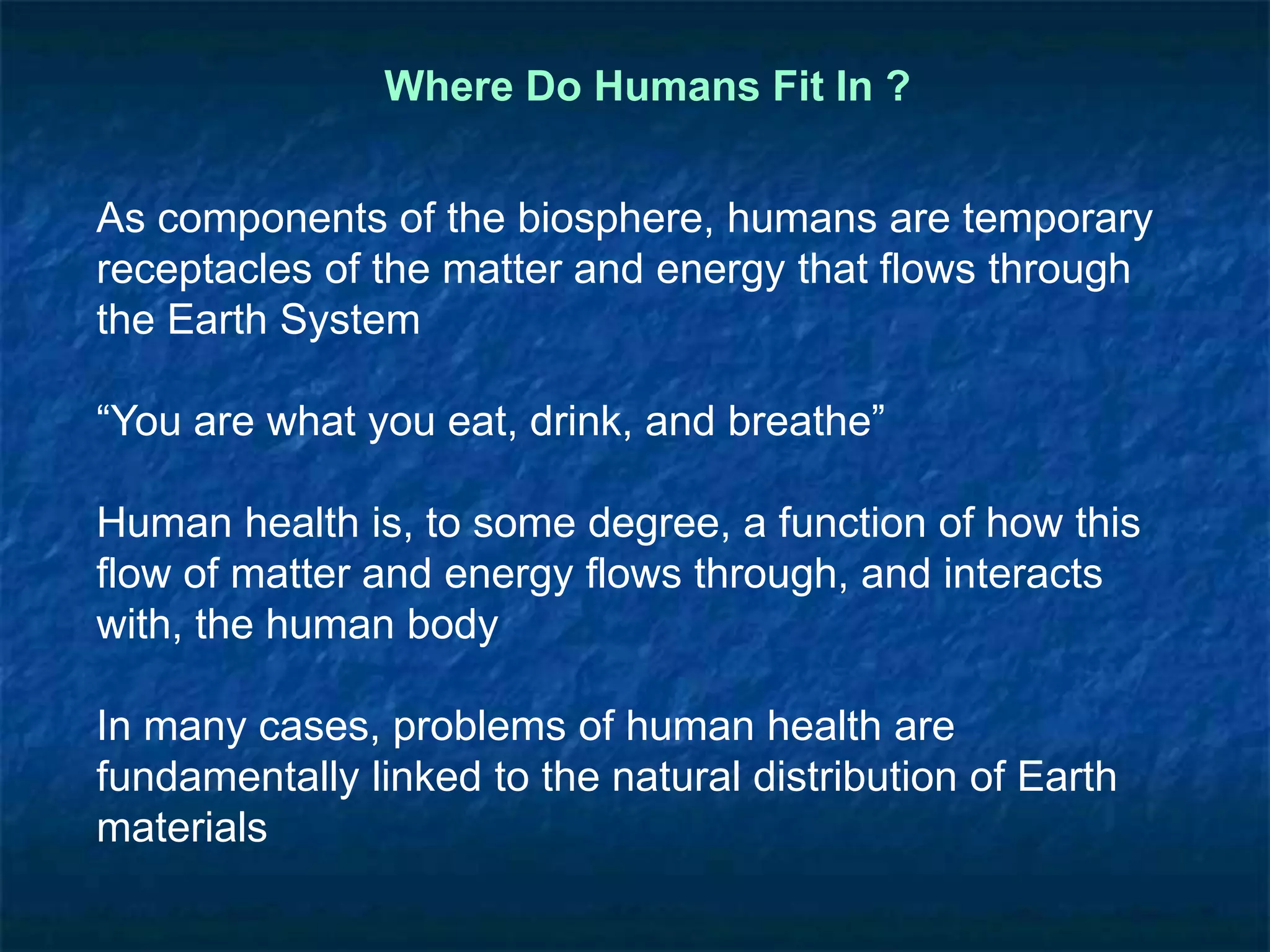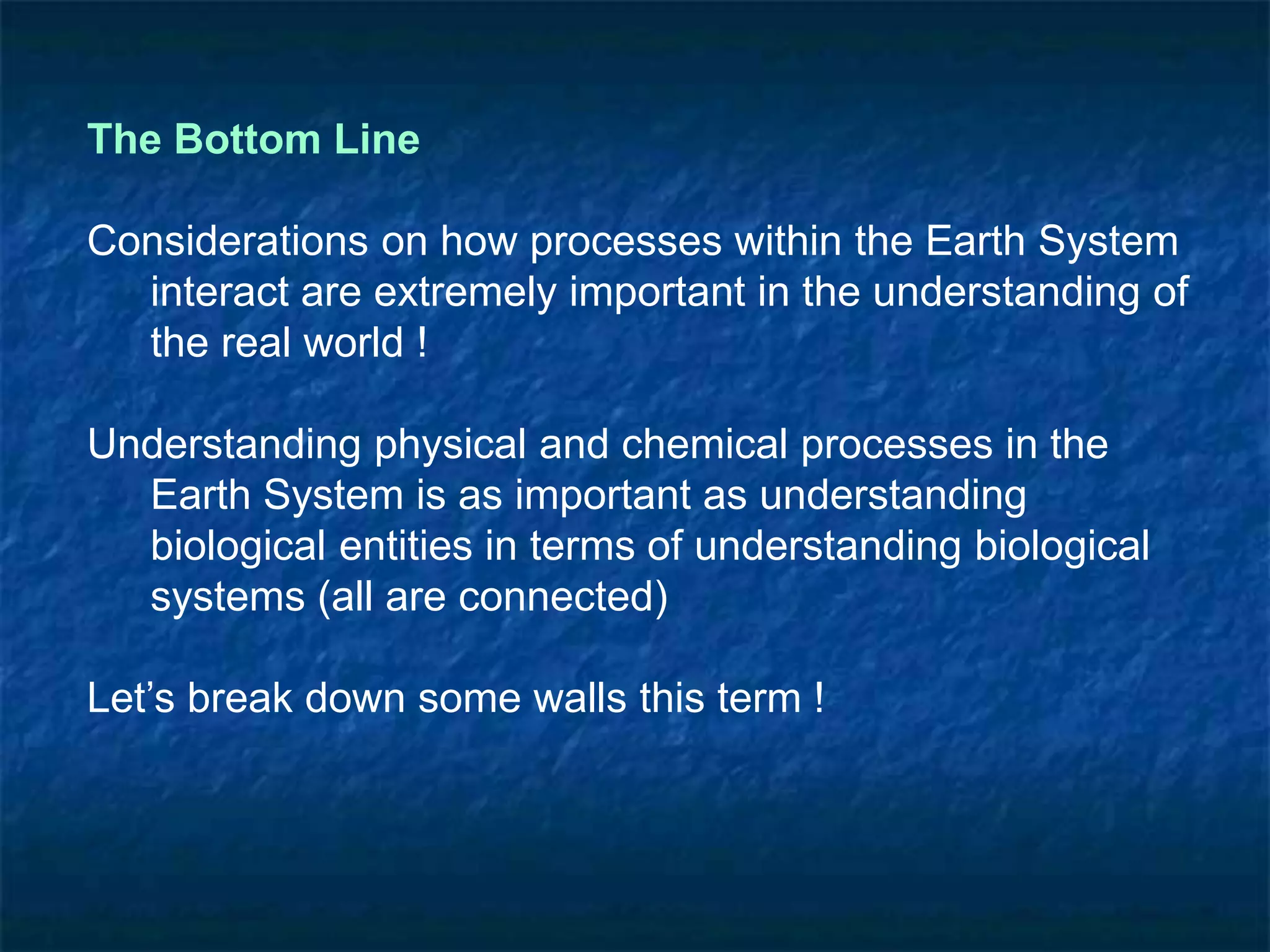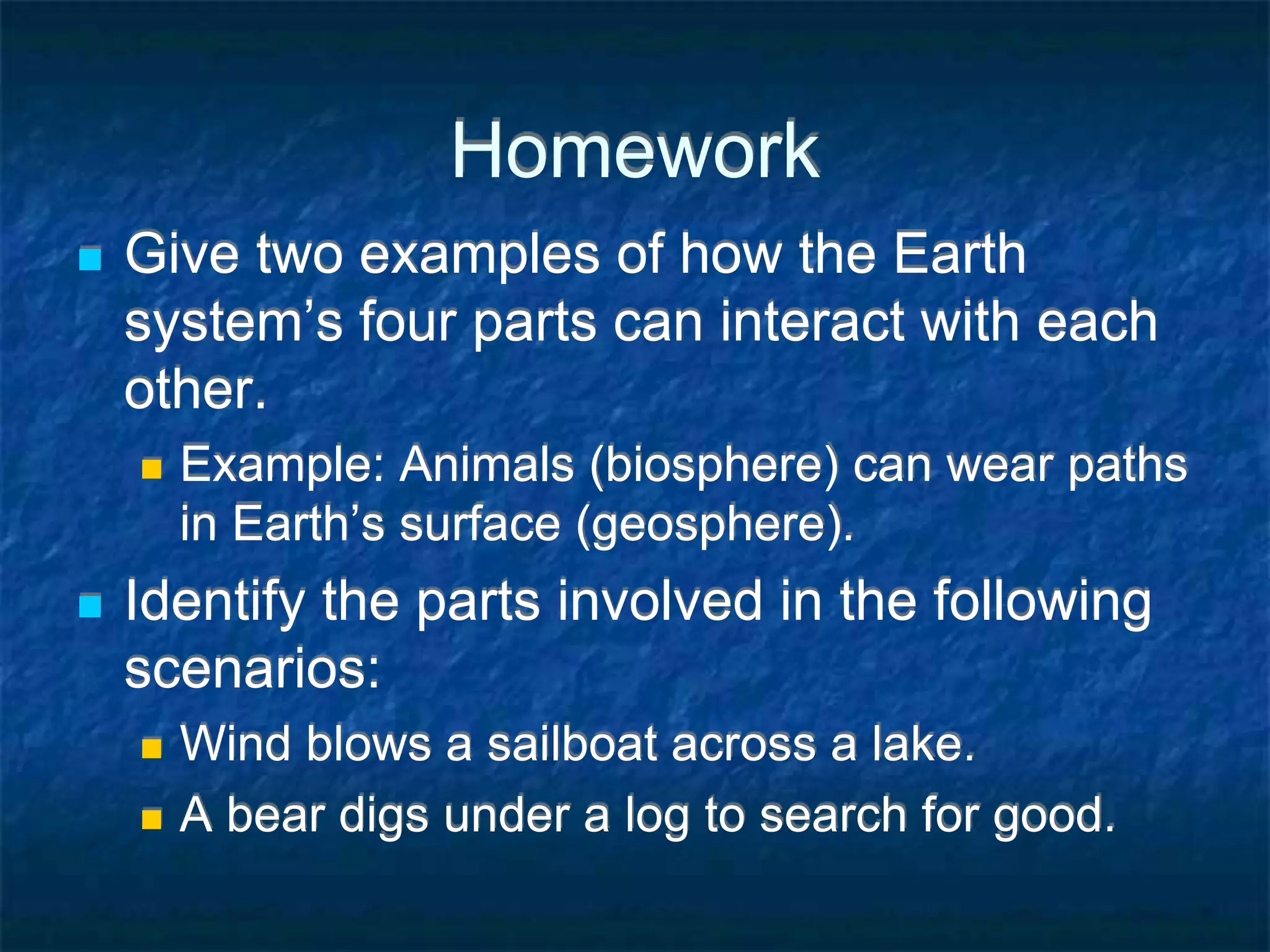Here are two examples of interactions between Earth system components:
1. Volcanic eruptions (geosphere) emit gases like sulfur dioxide into the atmosphere, impacting global climate. Ash and lava (geosphere) can also damage ecosystems (biosphere) on land and in the ocean.
2. Forest fires (biosphere) release smoke and particulate matter into the atmosphere, impacting air quality. Ash deposited on the ground (geosphere) and in water bodies (hydrosphere) can impact the environment.
The parts involved in the scenarios are:
1. Wind blows a sailboat across a lake.
- Atmosphere (wind) and hydrosphere (lake)
2. A
